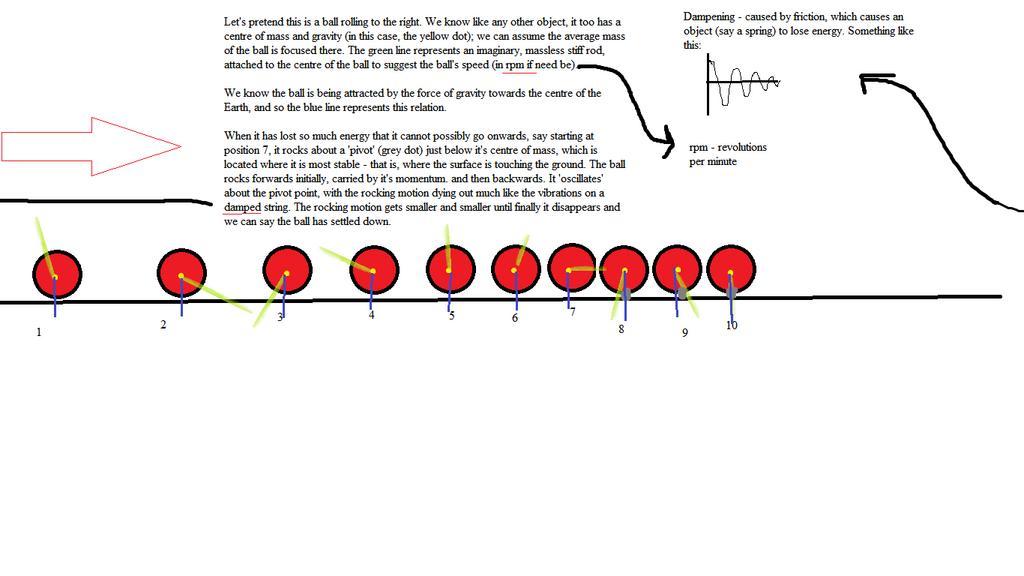Am I understanding you correctly when I take ‘settle’ to mean ‘comes to rest’? (Methinks I’ve been exposed to too much physics).
I’m more or less a beginner myself, thanks to school and what not. Anyhow, back on topic. How can you make the animation more realistic? It looks pretty good as far as I can tell. What I would like to know is whether you’re taking what material an object (in this case, the ball) is made up of before taking into account the extent of deformation. If it’s softer, I’d expect it to deform more, lose energy much more quickly, and so as a result not bounce as much. Assuming you are talking about a typical tennis ball, it will deform somewhat, and bounce a good many times before coming to a rest (rises to 3/4 it’s previous height with each subsequent bounce - atleast, that’s one way I’ve thought of gauging it).
As far as your animation shows, I don’t think the ball deforms a lot on contact with the ground? I tried playing it frame by frame, but I couldn’t see any significant ‘squashing’ as you put it. Try watching a few videos of real balls being bounced on different surfaces frame by frame as a sort of reference. Also, I like the fact the ball was spinning as it would be; however, how fast it is spinning (seemingly constant or perhaps it’s just me) contrasts with how the ball is actually losing energy. For some odd reason, my mind is telling me balls reverse the direction of their spin with each subsequent bounce due to friction; could someone verify that? I’m not quite sure if I remember correctly.
As far as helping you with the ball coming to a rest, I’ll do my best. Since you know the ball is losing energy, it’s easy enough to understand that at the very end, using the last dregs of energy it has, the ball desperately sways backwards and forwards before coming to a stop. I’ve attached a Paint illustration (you could call it) of what I mean. I’ve tried to explain stuff clearly so that it comprehensible for everyone (not everyone has done Physics, or alternatively, is good at it) but then again, perhaps I might just end up confusing matters …
If I’ve made a horrible mistake, I beg your pardon. (I realise my explanation was very physics heavy and might be completely useless).
All right, I’ll stop now. ;_;
Edit: I realise I’ve addressed more of the theoretical side of the issue, and less so of how to go about it. I’ll see if I can do something about that later, otherwise I leave you in more capable hands than mine. Good luck.
Attachments








